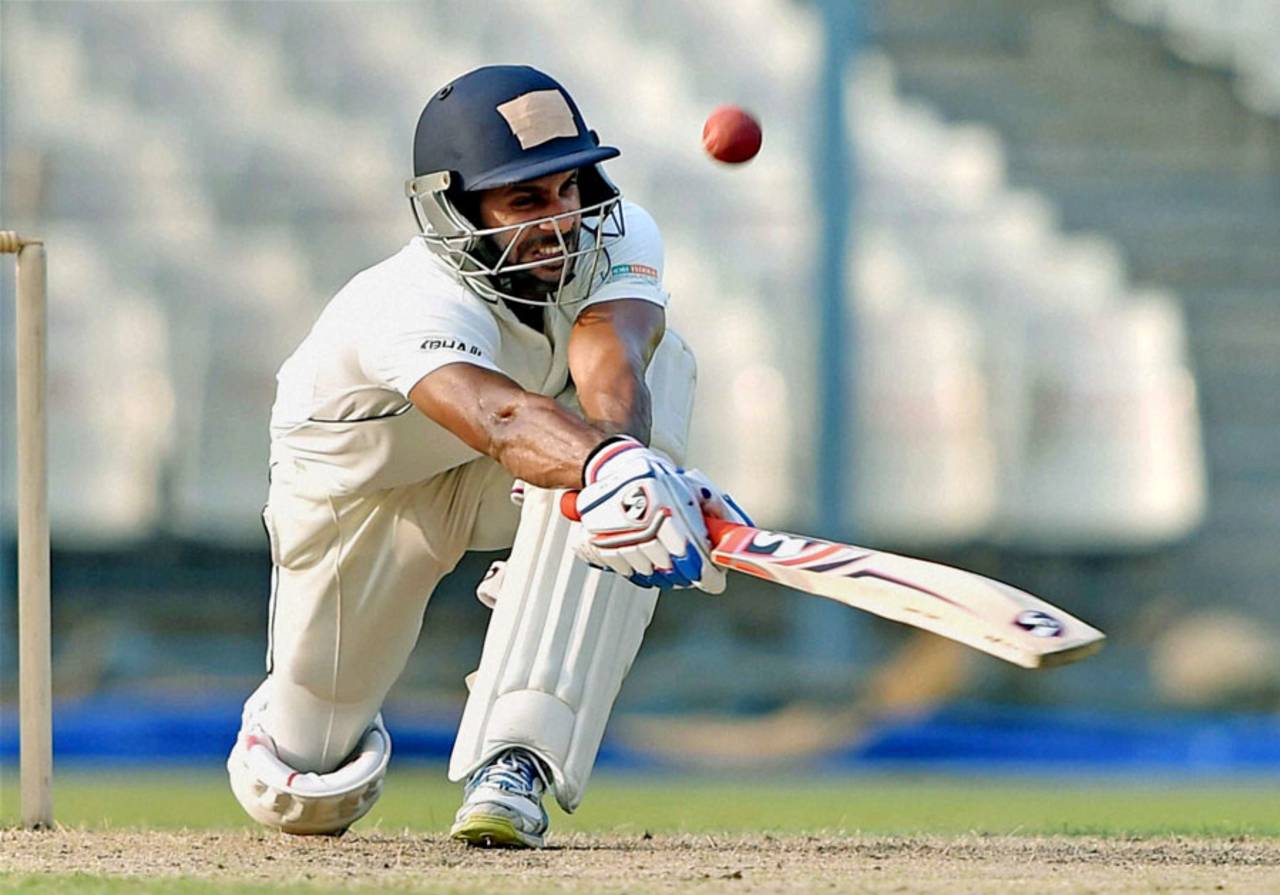Overseas interest in the Dhaka Premier League began to rise in 2013-14, when the tournament was granted List A status. That season attracted 82 players from outside Bangladesh, including Eoin Morgan, Ravi Bopara, Luke Wright, Jacob Oram and Ryan ten Doeschate. The BCB had allowed two overseas players per team then. That limit was set at one in 2014-15 and still there were plenty of players from Zimbabwe, Sri Lanka, England and Afghanistan participating.
Over the years, DPL teams have preferred to have Pakistani players. But that changed in 2013 when the PCB stopped issuing No-objection certificates to play in Bangladesh. The ban was lifted last year.
This season Indians were the hot property. There were 22 of them in a total of 36 overseas players. Next in terms of number were the Sri Lankans (10). BCB director Jalal Yunus believed this was because the best available players were from those two countries.
"The BCCI allowed them to play overseas, only in List-A format, after a number of years," he said. "So, most of the clubs went for Indian and Sri Lankan players this season. Pakistani players were not called up this year because many of their top names were busy in various competitions."
Uday Kaul was the first Indian signed up this DPL; he appeared in Abahani Limited's opening game on April 22. Abahani recruited six more of his countrymen, including
Manoj Tiwary, Dinesh Karthik, Yusuf Pathan and Rajat Bhatia, who has played in previous seasons.
Legends of Rupganj picked up three Indians - Jalaj Saxena, Ishank Jaggi and Pawan Negi, who stayed with them the longest.
Jalaj's elder brother,
Jatin Saxena was the highest run-getter and wicket-taker among the 22 Indian players. He finished with 279 runs and seven wickets from the seven matches he played for Kalabagan Cricket Academy.
His team was one of two to be demoted from the premier to the first division, but Jatin made the most of his opportunity and strengthened his chances of playing for a new team in the forthcoming Indian domestic season after obtaining an NOC from his current side Madhya Pradesh.
Jatin made his debut for MP in 2008, but managed to play just 50 matches across formats in eight years. "Lack of opportunities at Madhya Pradesh was a little tough, so I wanted to look for avenues," he told ESPNcricinfo. "I was in touch with clubs in UAE, but given the proximity and the standard of cricket, I thought Bangladesh was my best option."
Jalaj helped Jatin get in touch with Kalabagan. But the level of performance required from an overseas player to consistently feature in the XI had originally made him nervous.
"It was a challenge playing there, especially because I was going there on the back of just training sessions here, and not matches," Jatin said. "Given the competitive nature of the tournament, there is onus on you to perform, because two bad games, and there are chances that you would be replaced by another professional. So that way, there was pressure."
Jatin's gains weren't restricted to the field either. "As a professional, I learned about managing myself, going out of my way to interact with your team-mates. Language was a barrier, but we did just fine. The local players there were as eager to welcome me as much as I was looking forward to it. I made a lot of friends there. They were very inquisitive about club culture in India, our leagues, our domestic format. So, apart from cricket, there was healthy exchange of ideas."
While Jatin came, performed and left quietly, there was much frenzy in the media about the arrival of Tiwary. Ironically, he could only play
one match in Dhaka and had to return to Kolkata to play the Super League, a club tournament - the final of which was the first match played in India with the pink ball.
Tiwary said his interest in the DPL came via Shakib Al Hasan, his former team-mate at Kolkata Knight Riders. "Shakib and I forged a good friendship during my time with KKR, and he's been talking about the DPL for a while now, and kept asking me if I was interested for the last two-three years. But because I was playing in the IPL, I wanted to use the little time we get after that to recover and gear up for our own season.
"But this time, my summer was free since I wasn't part of the IPL. So I thought it was good to get some match time in Bangladesh. But because this time the CAB [Cricket Association of Bengal] organised two more local tournaments, including the Super League, I could just play one game."
Tiwary didn't get to play with Shakib, though both of them were in the same team but felt it had been a good experience to play with the other top Bangladeshi players in Abahani.
"I played with Tamim [Iqbal], Taskin [Ahmed], Liton Das, so in a way it was the cream of the crop," he said. "Net sessions were good, I thought it was extremely competitive. Bangladesh has improved in the limited-overs format, and that improvement, I feel, is a result of having competitive tournaments like these."
There was a time when players such as Raman Lamba, Ashok Malhotra and Arun Lal regularly played the DPL but the availability of Pakistani and Sri Lankan talent slowly took Indians out of the equation. Now, with the BCCI allowing their players in List A tournaments abroad, the DPL could once again become a profitable destination for Indian players.
Mohammad Isam is ESPNcricinfo's Bangladesh correspondent. Shashank Kishore is a senior sub-editor at ESPNcricinfo
